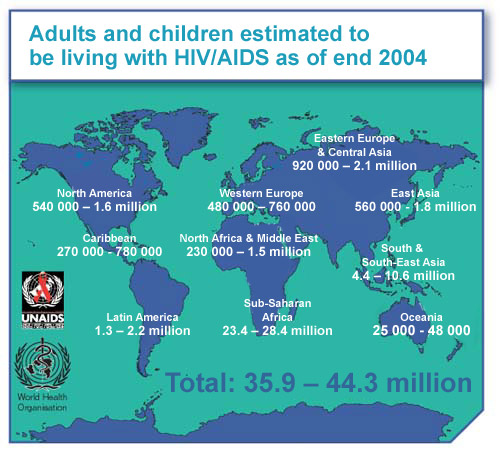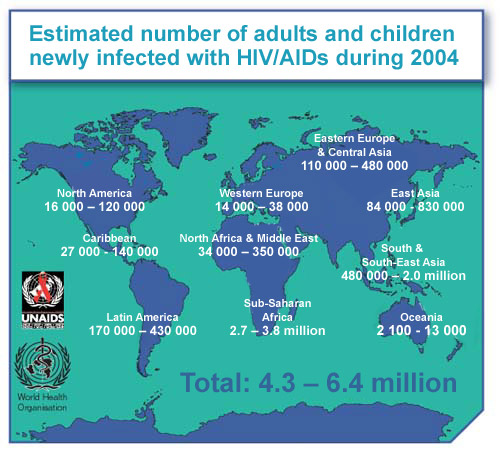|
Epidemiology of HIV [updated for 2005]
HIV infection is a worldwide epidemic – a pandemic – affecting people everywhere. The spread of HIV infection has occurred on such a scale, and the impact of the disease is potentially so devastating to world health, that only a concerted, global response is appropriate.
This was acknowledged in 1996, when six United Nations organisations took the innovative step of joining forces to form the Joint United Nations Programme on HIV/AIDS (UNAIDS).
Since then, UNAIDS has taken a leading role in reviewing and communicating the epidemiology of HIV infection. Each year UNAIDS provides best estimates on worldwide HIV prevalence, incidence and mortality, to help direct the effort to prevent the spread of the virus and care for those living with infection.
Download the complete UNAIDS 2004 report [6 MB]
The global impact of HIV/AIDS:
- At the end of 2004 an estimated 35.9-44.3 million people were living with HIV/AIDS – 33.8-41.7 million adults and between 2.0-2.6 million children below the age of 15 years.
Almost two-thirds of all people living with HIV/AIDS (23.4-28.4 million) live in Sub-Saharan Africa; another 4.4-10.6 million live in South and Southeast Asia.
AIDS deaths in 2004 - Between 2.8-3.5 million people died due to HIV/AIDS during 2004.
Joint United Nations Programme on HIV/AIDS (UNAIDS) and World Health Organization (WHO). AIDS epidemic update December 2004. Available at http://www.unaids.org
.
| 

